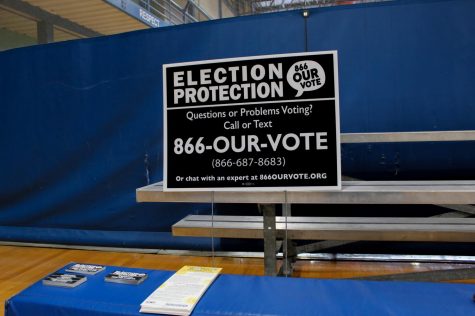What to Expect On Your Missouri Ballot
Considering this is the first time many college students have the opportunity to vote in a presidential election, it’s important to know what you’ll see on your ballot. Your vote isn’t just something that affects you, it’s something that affects millions of people. You must be well-informed on your decisions before you place your ballot. If you are registered at SLU, here is a brief rundown of the candidates you can choose to vote for:
| Position | Democratic Nominee | Republican Nominee |
| President of The US | Joe Biden | Donald Trump |
| US Rep. District 1 | Cori Bush | Anthony Rogers |
| Governor | Nicole Galloway | Mike Parson |
| Lieutenant Governor | Alissia Canady | Mike Kehoe |
| Secretary of State | Yinka Faleti | John R. Ashcroft |
| State Treasurer | Vicki Lorenz Englund | Scott Fitzpatrick |
| Attorney General | Rich Finneran | Eric Schmitt |
| State Senator, District 5 | Steve Roberts | Michael Hebron |
| St. Louis Circuit Attorney | Kimberly M. Garnder | Daniel Zdrodowski |
| St. Louis Sheriff | Vernon Betts | John N. Castellano III |
| St. Louis Treasurer | Tishaura O. Jones | Robert Vrobam |
Aside from general candidates to choose from there are also a few amendments/propositions that you have to vote for:
Constitutional Amendment 1
The main concept of this amendment determines whether or not the Lieutenant Governor, Secretary of State, State Auditor and Attorney General are limited to two terms at a time, before an election. If you vote in favor of Amendment 1, it continues to ensure that all the positions stated previously are given two years at a time. If you vote against Amendment 1 it does not ensure this.
Constitutional Amendment 3
This proposal, if passed, aims to use bipartisan commissions appointed by the governor to draw lines for the statehouse and senate districts. Districts would be made based on eligible voters rather than the whole population. Voting in favor agrees with this and voting against this disagrees.
St. Louis Proposition R
This proposition is pushing for more funding for the Community Children’s Services Fund through taxes. If this is passed, the tax will increase from 19 cents per 100 dollars to 25 cents per 100 dollars. With the money raised, there will be an increase in childhood education services for children under the age of 5 who are unable to attend public or charter schools. Voting in favor supports the tax increase and voting against this opposes the tax increase.
St. Louis Proposition 1
This proposition would require all officers and employers of the city of Saint Louis to reside only within the city boundaries. This forces individuals to fill in the vacant areas of the city. Voting in favor indicates that you agree with the proposition and voting against indicates that you disagree with this.
St. Louis Proposition T
Prop T aims to increase the taxes on fiber networks by the city. Currently, they pay $2.50 per linear foot but if this proposition is passed they would be required to pay a gross receipts tax of 7.5%. Voting in favor approves this proposition, and voting against it disapproves.
St. Louis Proposition D
This proposition is an attempt at giving the people a stronger say in the government. First, it helps create a nonpartisan primary, which allows voters to vote on all candidate positions, not just your designated party. It also implements an approval rating that gives you a say on all the candidates and if you find them to be acceptable in the office rather than just choosing one. It also allows the last two candidates chosen to participate in a run-off race in the general election.
All of this information can be overwhelming to a first-time voter but it is crucial to be aware of what you are voting on in order to make a fully-informed decision. Aside from just who and what you are voting for, there are also a few things that could potentially disqualify your ballot. Here are some tips and things consider:
- When you’re filling out your ballot, make sure you follow directions as precisely as possible. Whether it’s filling it out on a dry surface so you don’t accidentally spill anything on it or avoiding the use of red ink or marker, these simple but silly mistakes can cost you your whole vote.
- Don’t forget your signature! Signing your name on the outside of the envelope is crucial so that you are confirming your identity and your eligibility to vote.
- On the topic of signatures, try to match your signature as closely as possible to your driver’s license or any state-issued ID. This ultimately helps to prove that you’re the same person that the government recognizes you as.
- Be timely. It’s easy to forget to send out your mail, but try to set a reminder that your mail-in ballot cannot be sent late otherwise it won’t count.
- Many states have recently issued a strict warning on taking pictures of your ballot. This can disqualify your vote completely as it hinders with confidentiality policies.
The process may seem overwhelming but once it’s all said and done, it’ll be instant relief. Placing a vote in this 2020 election is a huge step, and it’s a big responsibility for U.S. citizens to take this opportunity to make our voices heard. Putting your vote in for the first time is something to be proud of, so educate yourself and make history.
Your donation will support the student journalists of Saint Louis University. Your contribution will help us cover our annual website hosting costs.













